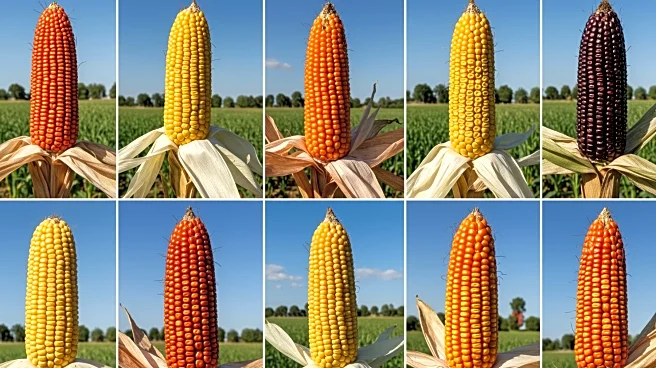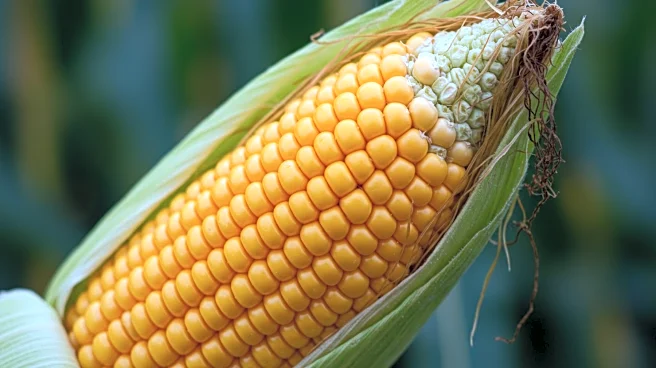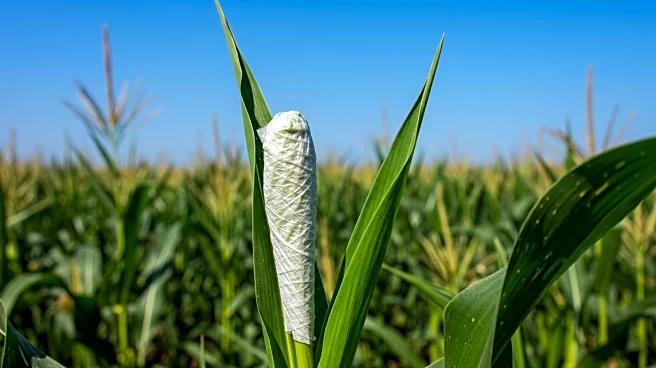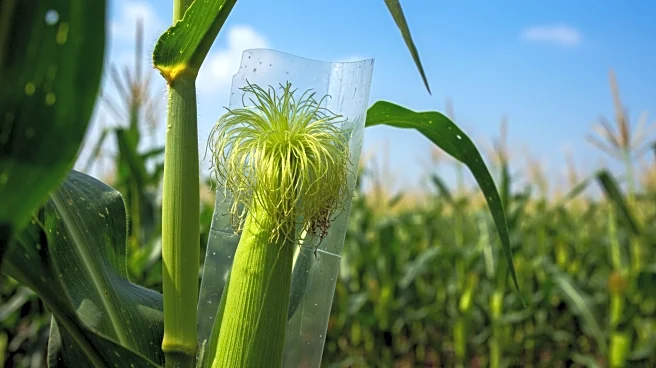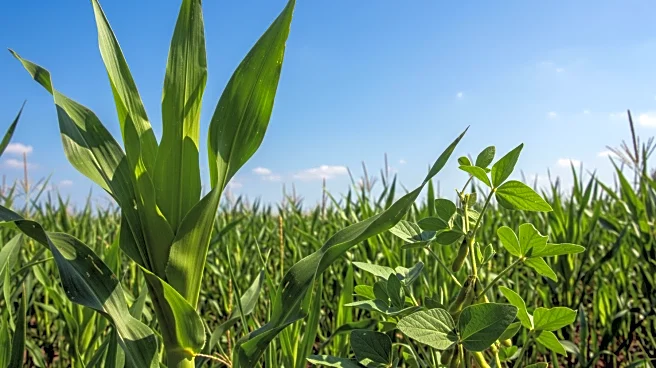What is the story about?
What's Happening?
The USDA Crop Progress report released on August 11 indicates that 15 states have reported corn reaching the dented growth stage, a critical phase in crop development. North Carolina leads with 83% of its corn in this stage, significantly above the five-year average of 59%. Texas follows with 69%, aligning with its historical average. Other states like Tennessee, Kentucky, and Missouri show varying percentages, with Tennessee at 48%, Kentucky at 33%, and Missouri at 24%. Iowa, Kansas, and Illinois also report progress, with Iowa at 15%, Kansas at 22%, and Illinois at 19%. The report highlights the condition of corn crops across these states, with ratings ranging from very poor to excellent. Notably, states like Wisconsin, Nebraska, and North Dakota show lower percentages, reflecting regional differences in crop development. The report also notes that Indiana, Michigan, and Pennsylvania have yet to report dented corn growth, which is typically expected by this time based on historical averages.
Why It's Important?
The dented growth stage is crucial for corn as it indicates the crop is nearing maturity, impacting yield and quality. The variations in growth stages across states can affect local economies, especially in regions heavily reliant on agriculture. States with higher percentages of dented corn may anticipate better yields, potentially boosting local agricultural markets and contributing positively to the national economy. Conversely, states lagging in this growth stage might face challenges, including lower yields and economic strain on farmers. The report's findings can influence market predictions, agricultural planning, and policy decisions, as stakeholders assess the potential impact on supply chains and commodity prices. Understanding these regional differences is vital for farmers, agronomists, and policymakers to make informed decisions regarding resource allocation and crop management strategies.
What's Next?
As the corn crop continues to develop, stakeholders will closely monitor weather conditions and pest pressures that could affect the final yield. States yet to report dented growth, such as Indiana, Michigan, and Pennsylvania, are expected to provide updates soon, which will complete the national picture of corn development. Farmers and agronomists will use this data to adjust harvesting schedules and optimize crop management practices. Additionally, the USDA will continue to release weekly updates, providing insights into crop conditions and progress. These reports will be crucial for traders and analysts in predicting market trends and making investment decisions. The agricultural community will also focus on post-harvest activities, including storage and distribution, to ensure the quality and availability of corn products.
AI Generated Content
Do you find this article useful?
